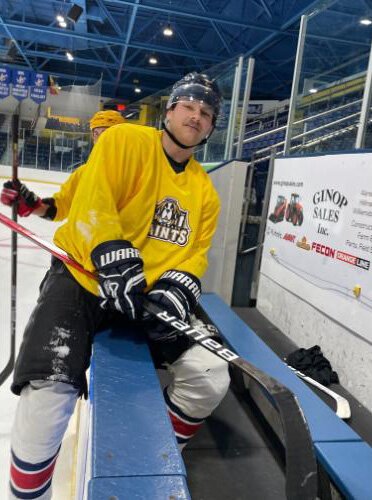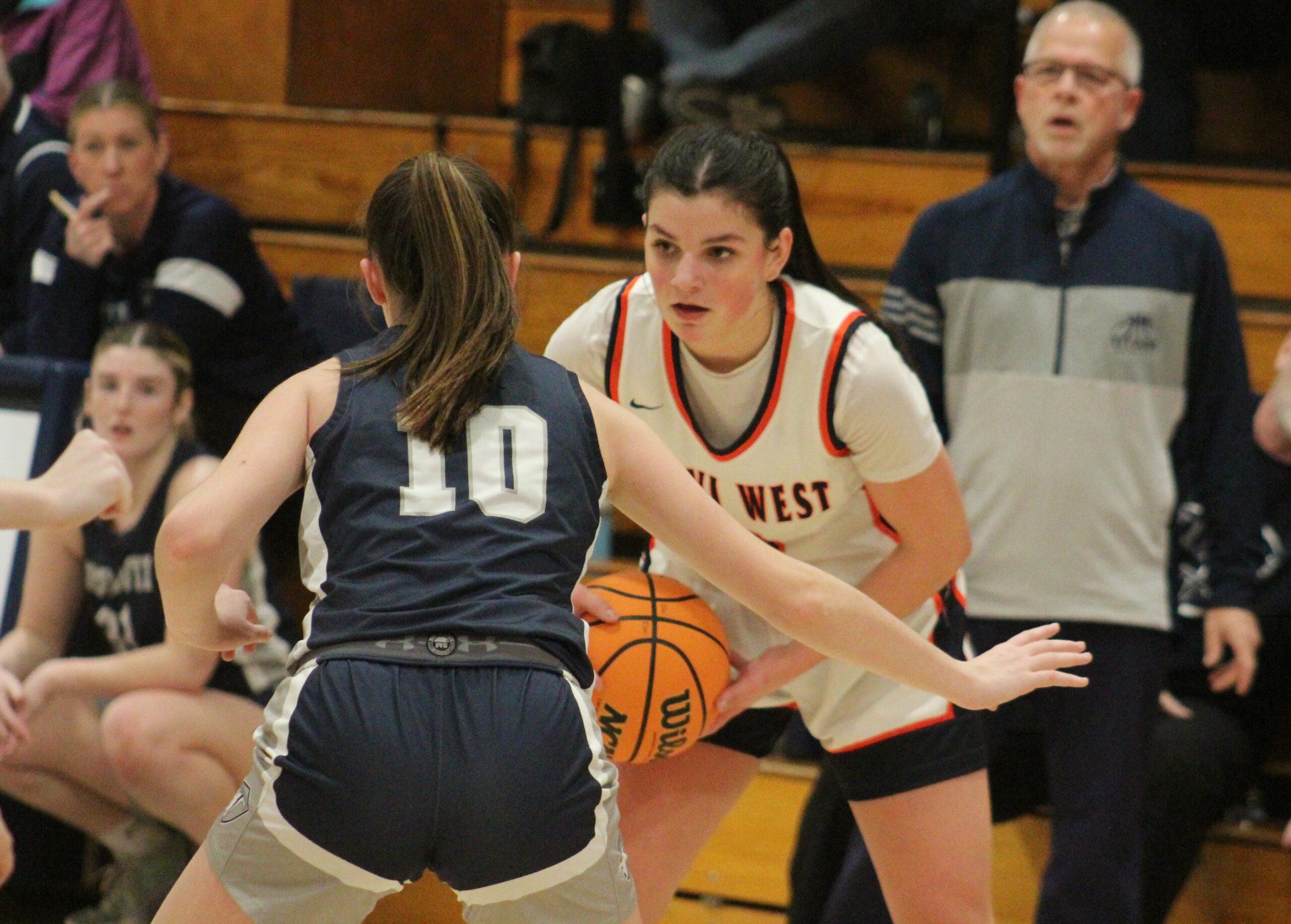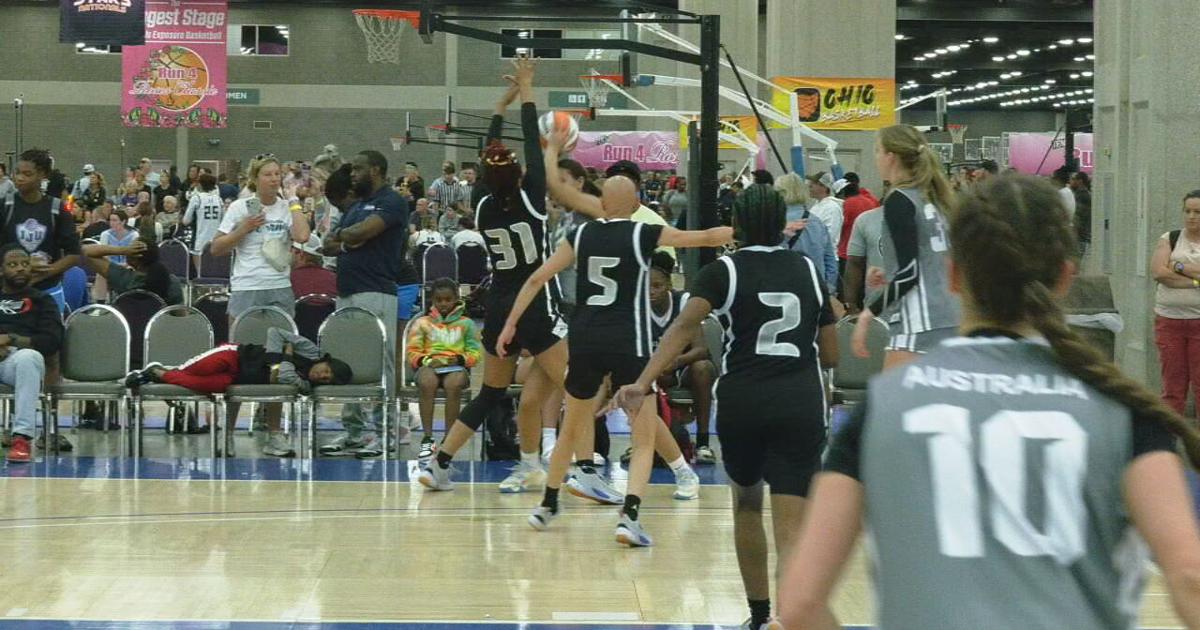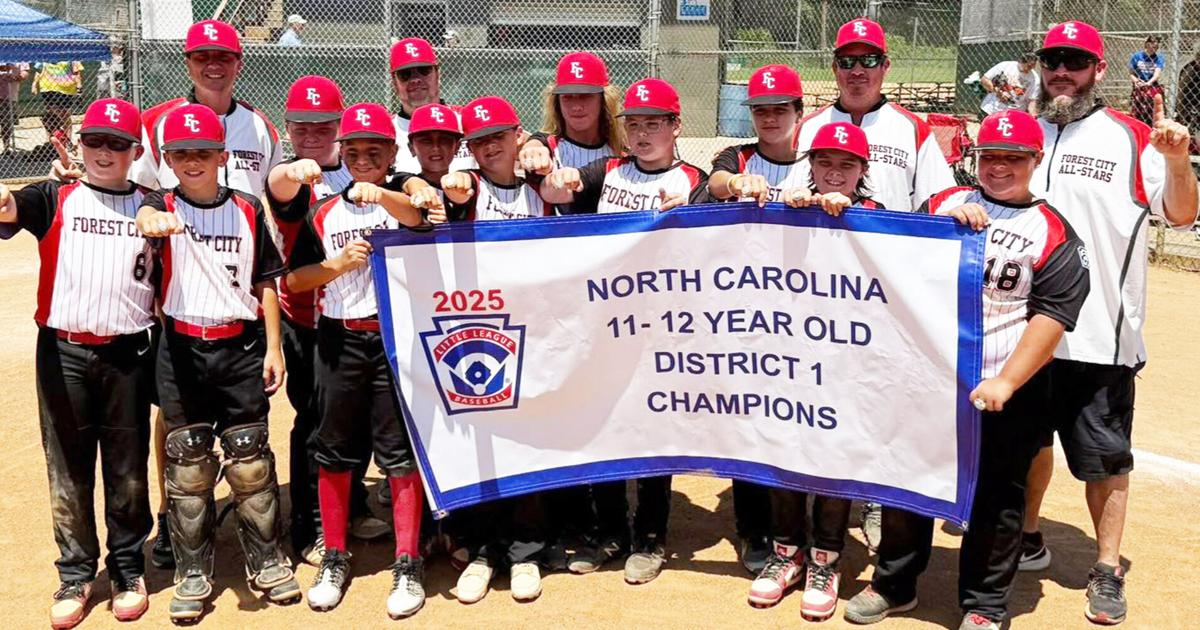The Michigan Independent Hockey League (MIHL) has expanded to the U.P. for the first time, with the St. Ignace Saints joining the league for the upcoming 2025-26 season.
The Saints are part of a four-team expansion that will create a new division in the league and provide a unique “big sports” entertainment to the Eastern Upper Peninsula.
“It’s a different style of hockey and the league is actually really exciting to watch,” says Owner and Interim Head Coach Jeremy Pallot-Behling. “We want to be competitive, and the blueprint is there for us. It has no choice but to work.”
Formed through a core group of players from the now defunct Soo Nordiques, Pallot-Behling leads the franchise in its inaugural season. Supported by both his business and coaching experience with the Lake Superior State University ACHA teams, Pallot-Behling and the Saints have quickly established relationships with community leaders focused on both the business and hockey side of starting a franchise.

 Calling the 1,100-seat Little Bear Arena home, the Saints will be the latest major hockey option in an underrated market for the sport. The arena is just a block away from East Moran Bay, where one of the largest and most prestigious pond hockey tournaments in the United States take place every February.
Calling the 1,100-seat Little Bear Arena home, the Saints will be the latest major hockey option in an underrated market for the sport. The arena is just a block away from East Moran Bay, where one of the largest and most prestigious pond hockey tournaments in the United States take place every February.
“St. Ignace is a great hockey community; there is no denying that. When we started discussing a team, we had no reason not to take a look at (the market)” said MIHL Commissioner Scott Brand. “We don’t have to worry about exciting people with any dog-and-pony shows, we can just go out and play hockey to fans that know the game.”
The team will use the Saints moniker, similar to the youth and high school programs in the area. Pallot-Behling said that a similar name would help unite the community’s athletic efforts and was approved by local leaders. Unlike other teams using the block ‘S’ with motion markings, the MIHL franchise will use a Saint Bernard mascot in its branding.
Working with St. Ignace leaders has been one of the easier parts of creating the franchise, Pallot-Behling said.
“We reached out to the rink and the city and everybody immediately came on board. It was obvious that this was the spot where we needed to be,” he said. “(St. Ignace) knows hockey and they pack the barn for youth games regularly.”
Establishing team-based sports in the region has been difficult, despite the U.P. being a well-known haven for individual sports.
In addition to hosting the U.S. Skiing and Snowboarding Hall of Fame in Ishpeming, multiple international championships for ski jumping and natural luge were held through the region. The largest sled dog race in the Lower 48 is the U.P. 200 and the largest ice climbing festival in the Midwest is held in Munising every year.
In the midst of a larger tourism push across the region, many summertime activities have lower participation but still hold recognizable events like the Marquette Marathon or the Island Resort Championship in the LPGA.
Unfortunately, for team-based endeavors, most of them have died out.
The exception comes in hockey, where three historic franchises and a relocated junior team still compete. The Portage Lake Pioneers and Calumet Wolverines are so old they predate Michigan’s business incorporation laws. They play in the Wisconsin-based Great Lakes Hockey League. The two junior teams compete in Canadian-based leagues, as the Soo Eagles play in the Northern Ontario Junior Hockey League and Ironwood Lumberjacks play in the Superior International Junior Hockey League.
St. Ignace’s inclusion in the MIHL though is the first time that a franchise has tried the semi-pro level based exclusively in Michigan. Most franchises were either big enough to include multiple states in the Midwest or incorporated in Wisconsin.
Andrew MacIver is the Assistant Director of Community Services for the City of Marquette and has seen his fair share of franchises come and go over his professional and collegiate career.
While talent dilution, limited facilities to share between youth and adult programs and the success of collegiate programs have all negatively impacted teams near the UP’s biggest population hubs, markets like St. Ignace could have more success in creating the fan base necessary to keep a team thriving.
“The UP is only three percent of the total population of Michigan and of the three major cities up here in Marquette, Houghton/Hancock and Sault Ste. Marie, you have markets where there’s already NCAA D1 and ACHA women’s hockey. It is so difficult to compete with that,” he said. “It has to be a passion project led by someone who is able to operate in the red more so than not.”
According to MacIver, travel is also a major factor for teams in the Upper Peninsula. It’s a six-hour drive to Minnesota and four to Green Bay or Appleton, plus a time change making the return trip more difficult. While parents are bringing kids these distances for elite youth hockey and basketball programs in the hopes of creating a way for their children, that is not always possible for adults balancing a career while staying active in their sport.
In the MIHL, teams are limited to a 250-mile radius from St. Louis, Michigan, located in almost dead center of the Lower Peninsula. But while those distances can be daunting to many Michiganders below the bridge, the Saints believe the distance won’t be a challenge. Instead, it will be how spread out the team will be in getting to St. Ignace.
“We’re not too worried about (the travel). Kalkaska, Cheboygan — we’ve been doing that all of our lives,” Pallot-Behling said. “We have four or five locals from the City of St. Ignace, with a lot of other guys coming from the Soo or the Canadian side of the Soo. It’s just 45 minutes away, so we can try and keep it close.”
According to Brand, league expansion to include a North and South division will significantly cut down on travel for all franchises. Even with the teams playing more games, all eight MIHL teams will travel less this season than all seven high school football teams in the Big North Conference like Escanaba, Marquette, Alpena and Petoskey.
Smarter economic moves for the team and league can also translate to economic benefits to the community.
“You’re looking at 12-14 hotel rooms on the year for travel, plus gas money. From a team standpoint, that makes a lot of sense,” Brand said. “Now, teams are buying ice time in rinks, helping to funnel funds into those buildings and bringing fans in who will buy a hot dog and a cold drink. Some might hit a nearby restaurant or casino.
With just 13 home games, that’s going to help bring some money into these areas. Is it like building a factory? No, but it is going to help out local economics.”
Working further with the community is a major goal for the Saints, who have already developed relationships with local chambers of commerce and youth hockey programs. Plans on broadcasting the games on social media, fan interaction events on and off the ice and integrating the youth hockey teams will help introduce the team further to the community, but Pallot-Behling said the Saints still have to win and have those magical moments to create a long-lasting fandom in St. Ignace.
“Ultimately, we think we can take the North (Division) after seeing a couple rosters and signings, but our big goal is to grow our fan base. Losing teams don’t put butts in seats, so we need to work hard and we need to be good if we want to be sustainable,” he said.
The MIHL will start their exhibition season this October with further games lasting throughout the winter and ending with the playoffs and championship in April. For more information, visit the MIHL website or the St. Ignace Saints Facebook and Instagram pages.
Brice Burge is a regular contributor to UPword.





























































